This four part series documents my time on a cruise ship, quite literally cruising down the Nile from Luxor to Aswan. Read Part I here.
And so, temples galore filled my first day on the Nile. The next day our tour guide focused on various types of treasures in Luxor, but this time on the West Bank. We loaded up in the bus and headed deep into the sandy landscape. Our day filled up with two major sites: the Valley of the Kings and the Valley of the Artisans. However, before and after we stopped at a couple ‘smaller’ stops. Our first major stop was the Valley of the Kings, but just before we had a quick photo opportunity with the Mortuary Temple of Hatshepsut. I was slightly disappointed not to have gone inside this one, but our tour simply had to cut some things out. Don’t get me wrong, the day was spectacular, but I can’t help but feel a little bit downtrodden as Hatshepsut is something I know about historically. But, later on, I realised why we skipped this stop. In any case, I’ll have to go next time around!
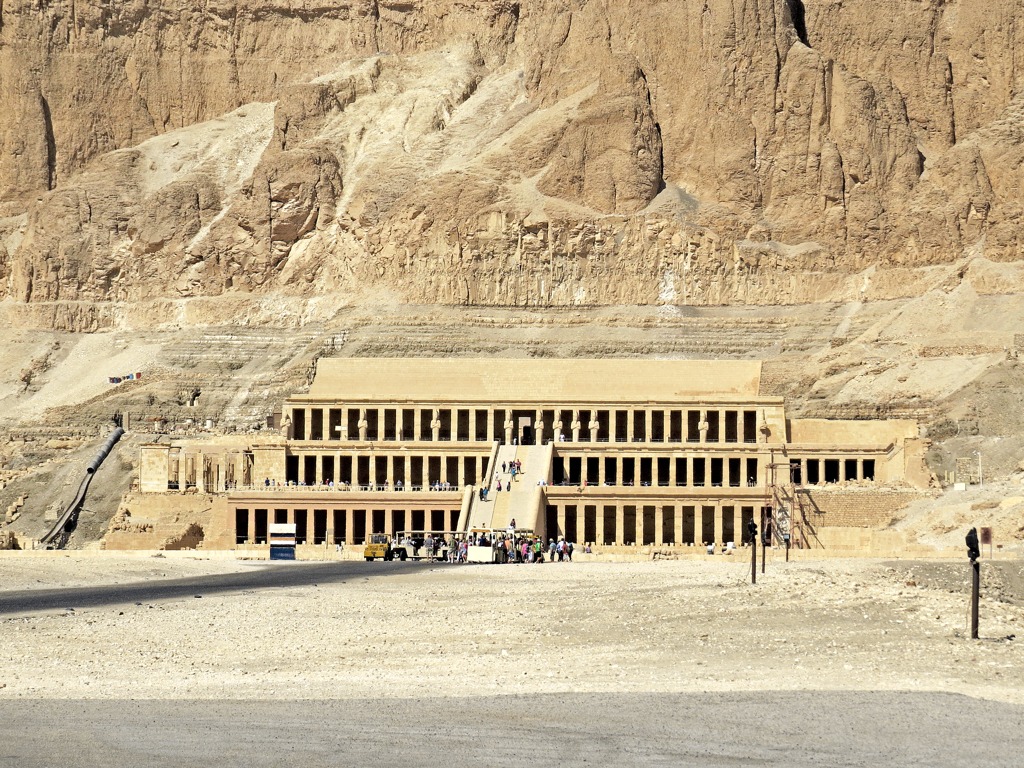
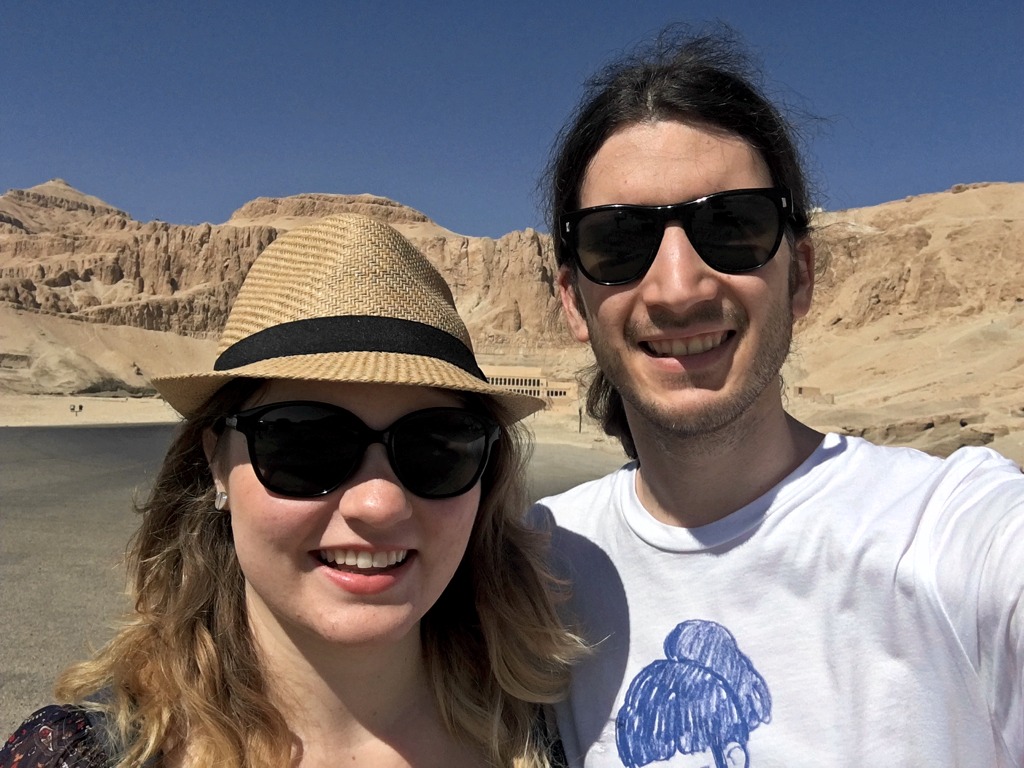
Valley of the Kings
Our main stop of the day was the famous Valley of the Kings, the burial site of royals since 2100 BC. A large pyramid-shaped mountain called Al-Qurn (The Horn) dominates the vast site. The site was once called the Great Necropolis of Millions of Years of Pharaoh, or the Place of Truth. The East Valley is where most of the tombs are located. The tombs here are organised with a numbering system in the order of discovery (KV 1, KV 2, etc.). As of today, archaeologists have discovered 65 tombs and burial chambers. Though there are so many, the organisers rotate which tombs are open to the public. At any one time there may be five or six tombs open and with your entrance ticket you can visit any three.
In addition, you can pay extra to visit the Tomb of Tutankhamun and the Tomb of Ramses VI (assuming they are open). You are not allowed to take photos for various reasons, but I will try and convey to you everything I saw.
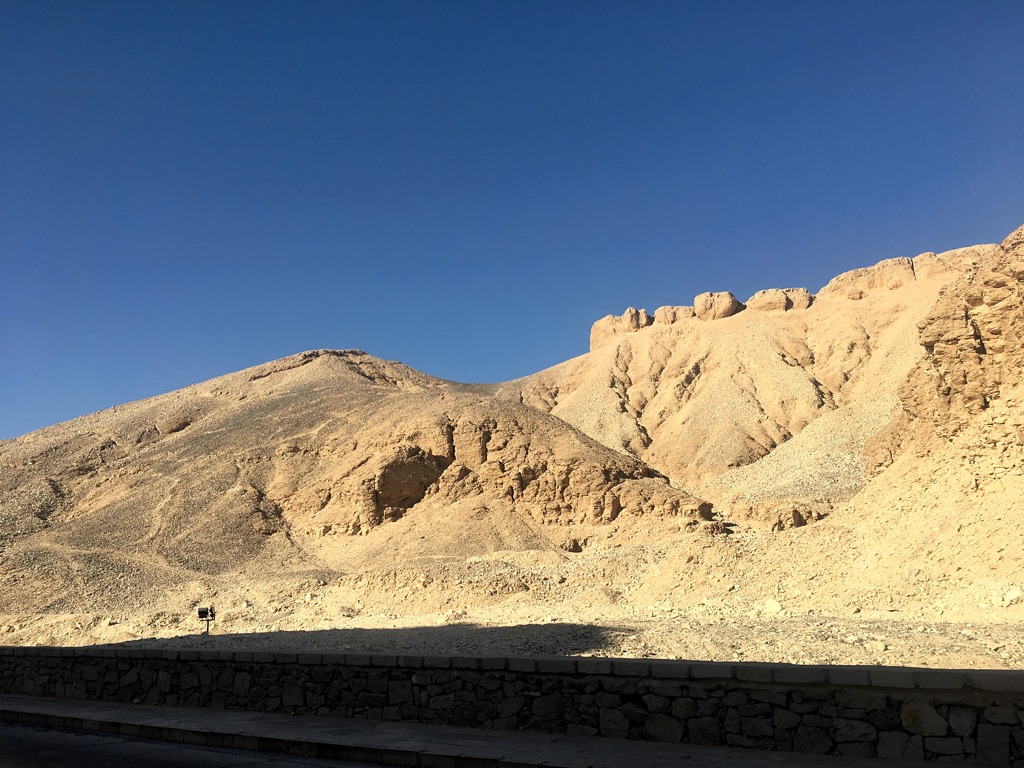 We visited a total of four tombs, paying a separate entrance fee for one of them. The first tomb we entered was the Tomb of Tawosret/Sethnakht (KV 14), which is in the far back going up the mountain. Our second tomb was the famed Tomb of Tutankhamun (KV 62), which was in fact the smallest tomb we saw, but is really neat because the mummy is housed on site. There is a replica of where the sarcophagus would have been and the walls are full of vivid colours. Very little of the inscriptions are chipped off or faded.
We visited a total of four tombs, paying a separate entrance fee for one of them. The first tomb we entered was the Tomb of Tawosret/Sethnakht (KV 14), which is in the far back going up the mountain. Our second tomb was the famed Tomb of Tutankhamun (KV 62), which was in fact the smallest tomb we saw, but is really neat because the mummy is housed on site. There is a replica of where the sarcophagus would have been and the walls are full of vivid colours. Very little of the inscriptions are chipped off or faded.
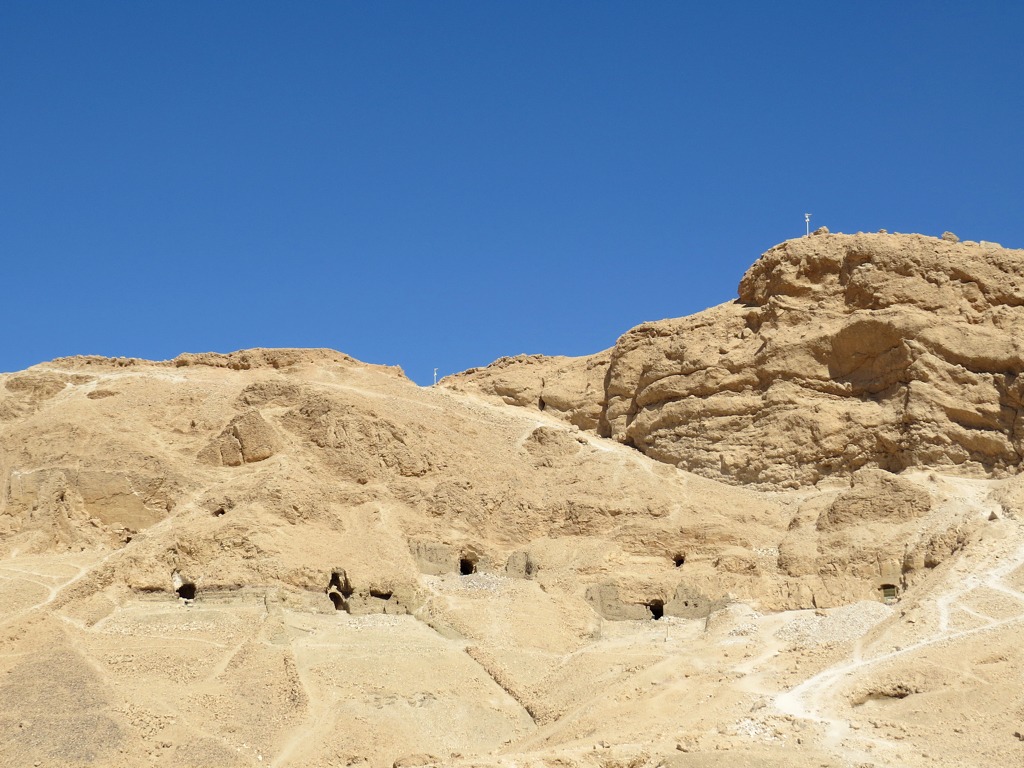 We then entered the most visited tomb in the valley, the Tomb of Ramses IX (KV 6). It is characteristically different from the previous tombs with a huge, long hallway leading to the burial chamber. The hallway itself is super wide and incredibly accessible. The tomb is not that deep and slowly descends to the burial chamber. The walls are incredible, packed in with figures and scenes. The ceiling was definitely my favourite aspect for it features an astronomical scene with a dark blue background decorated with golden shapes and figures.
We then entered the most visited tomb in the valley, the Tomb of Ramses IX (KV 6). It is characteristically different from the previous tombs with a huge, long hallway leading to the burial chamber. The hallway itself is super wide and incredibly accessible. The tomb is not that deep and slowly descends to the burial chamber. The walls are incredible, packed in with figures and scenes. The ceiling was definitely my favourite aspect for it features an astronomical scene with a dark blue background decorated with golden shapes and figures.
Our last stop was the Tomb of Ramsses IV (KV 43). In some ways it is quite similar to the Ramses IX tomb as it has the same layout. The tomb goes deeper into the mountain and the colours are more vivid. The artisans carved much more hieroglyphics into the walls. Strong blues and yellows cover the interior. The hallway leads to the burial chamber which you can walk around unlike the Ramses IX tomb. Again, the burial chamber is full of colours.
Valley of the Artisans
Arabic began to appear as the dominant language in Egypt in the early eighth century, overtaking Coptic and Greek. And obviously, Egyptians abandoned ‘Egyptian’ altogether. Therefore, people today use the Arabic names of many of the ancient Egyptian sites. This is useful to know because you never know if two people are calling the same place by different names. On this tour I was hearing the Arabic name, the Egyptian name, and the English and Spanish translations. It can get a bit confusing. In ancient times, the Valley of the Artisans was called Set maat, meaning ‘the place of truth’ (like the Valley of the Kings). Eventually, the temple of Hathor was converted into a church which is why in Arabic the site is called Deir el-Medina meaning ‘the monastery of the town’.
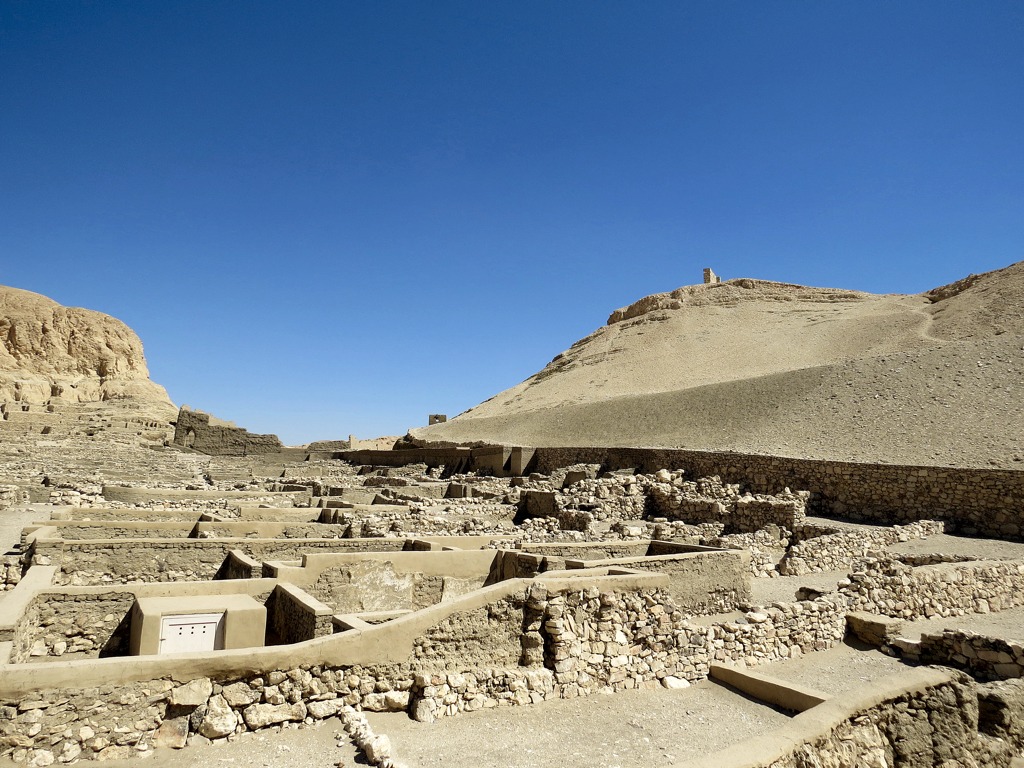 In direct contrast to the Valley of the Kings, the Valley of the Artisans is the burial site for artisans. Sometimes this area is known as the Workers’ Village but these were not regular folk. They ranked high enough to deserve such an expansive resting place. Typically, tours choose either to go to the Mortuary Temple of Hatshepsut or the Valley of the Artisans, so you might ask: why pick this site over the other? The Valley of the Artisans is incredibly interesting because the painted scenes document most of our knowledge regarding the everyday life of ancient Egyptians. These records provide insight into their lives regarding village life, women, law, medical care, and morals.
In direct contrast to the Valley of the Kings, the Valley of the Artisans is the burial site for artisans. Sometimes this area is known as the Workers’ Village but these were not regular folk. They ranked high enough to deserve such an expansive resting place. Typically, tours choose either to go to the Mortuary Temple of Hatshepsut or the Valley of the Artisans, so you might ask: why pick this site over the other? The Valley of the Artisans is incredibly interesting because the painted scenes document most of our knowledge regarding the everyday life of ancient Egyptians. These records provide insight into their lives regarding village life, women, law, medical care, and morals.
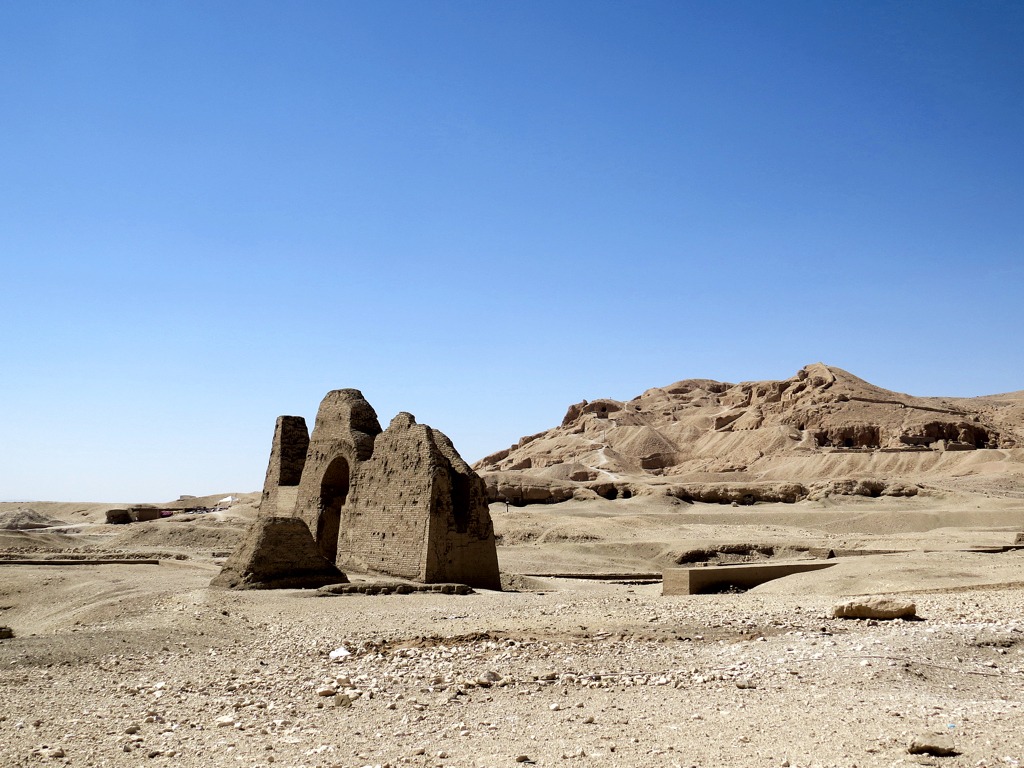 We were able to visit two tombs. Immediately we noticed that these tombs are way smaller and more narrow than the tombs of the Pharaohs. We climbed really far down into the ground ducking our heads because of the low ceilings. There is not very much to see until you get to the burial chamber itself. It is a small room but it is spectacular. Colour covers the room. Everything is painted, not carved. Most of the painted scenes are taken from the Book of the Dead with details showing the underworld.
We were able to visit two tombs. Immediately we noticed that these tombs are way smaller and more narrow than the tombs of the Pharaohs. We climbed really far down into the ground ducking our heads because of the low ceilings. There is not very much to see until you get to the burial chamber itself. It is a small room but it is spectacular. Colour covers the room. Everything is painted, not carved. Most of the painted scenes are taken from the Book of the Dead with details showing the underworld.
Mortuary Temple of Ramesses III
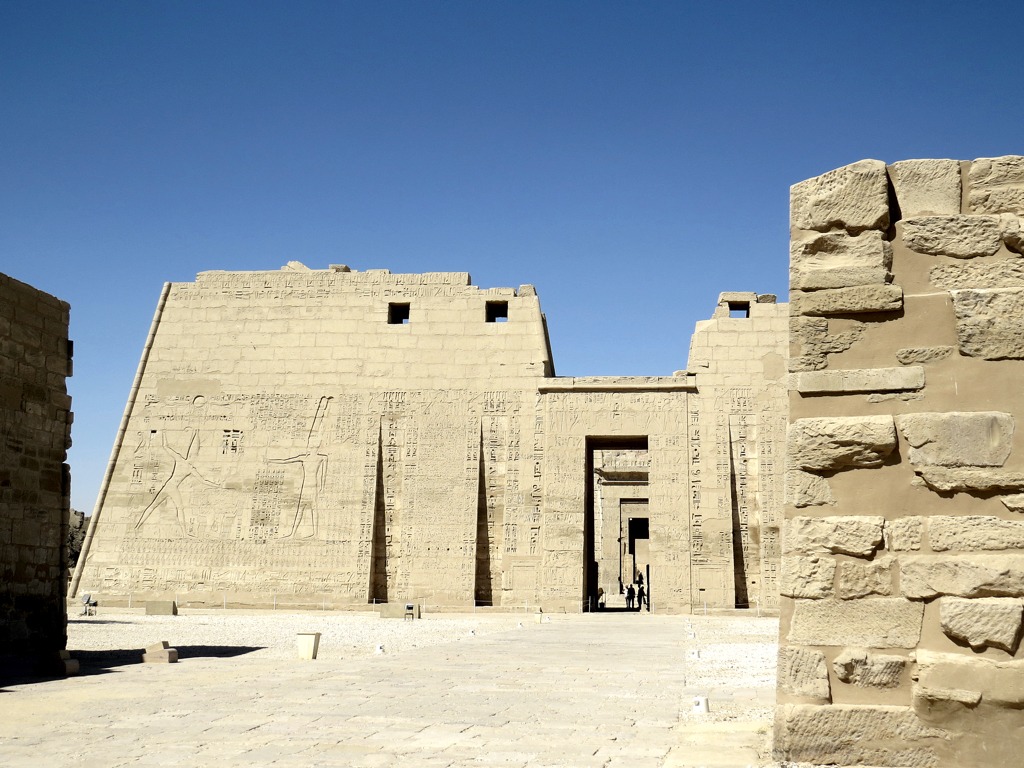
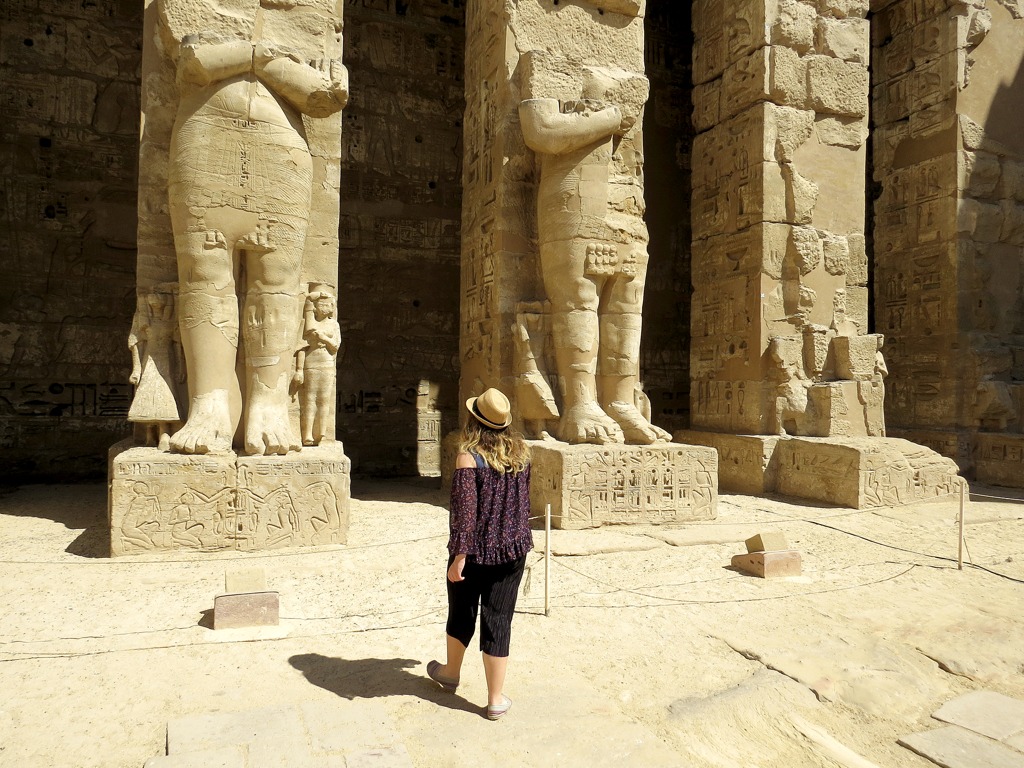 In Arabic, the name of the locality is Medinet Habu which is now almost synonymous with this temple. It is an awesome temple to say the least. As our trip to Egypt went on, we started to get a sense of what a typical Ancient Egyptian temple looks like. We started to understand what an orthodox layout is and what the various components are. For example, giant pylons greet visitors. This temple’s pylons depicts the defeat of the Sea Peoples.
In Arabic, the name of the locality is Medinet Habu which is now almost synonymous with this temple. It is an awesome temple to say the least. As our trip to Egypt went on, we started to get a sense of what a typical Ancient Egyptian temple looks like. We started to understand what an orthodox layout is and what the various components are. For example, giant pylons greet visitors. This temple’s pylons depicts the defeat of the Sea Peoples.
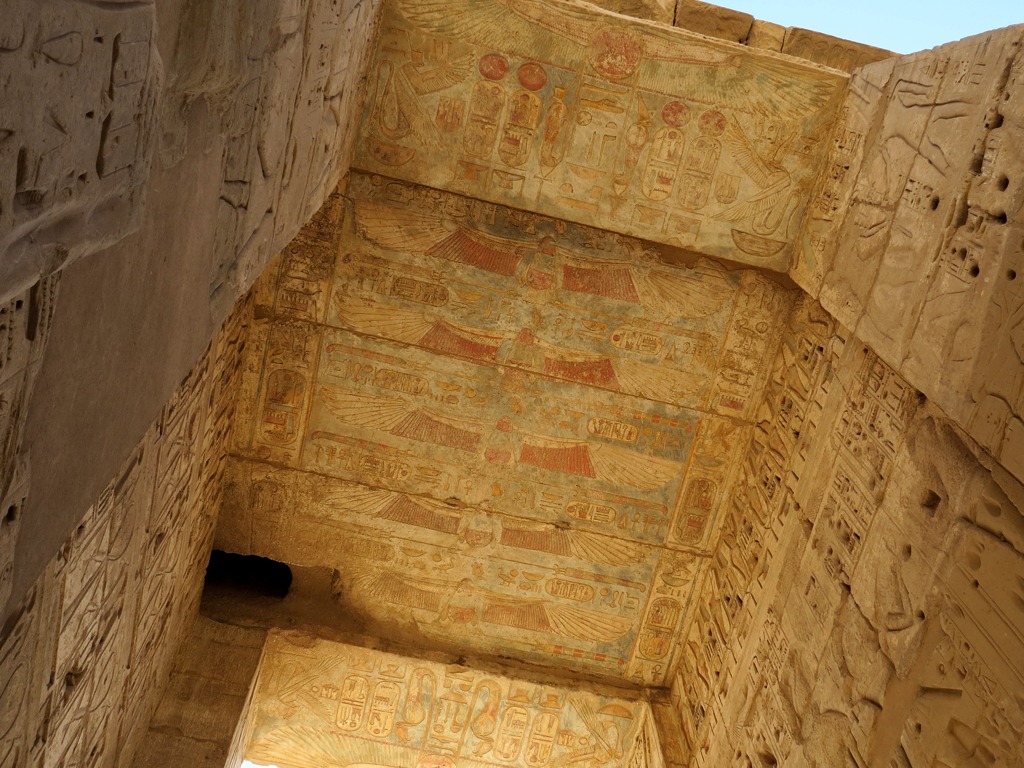
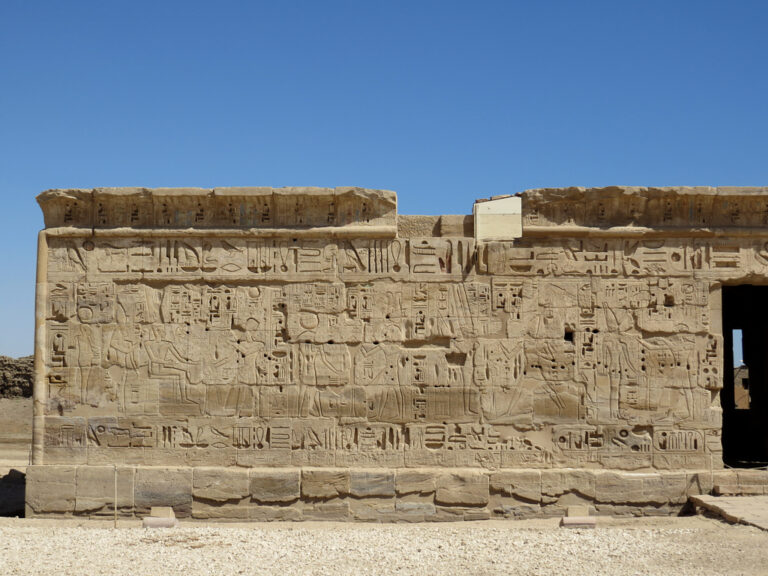
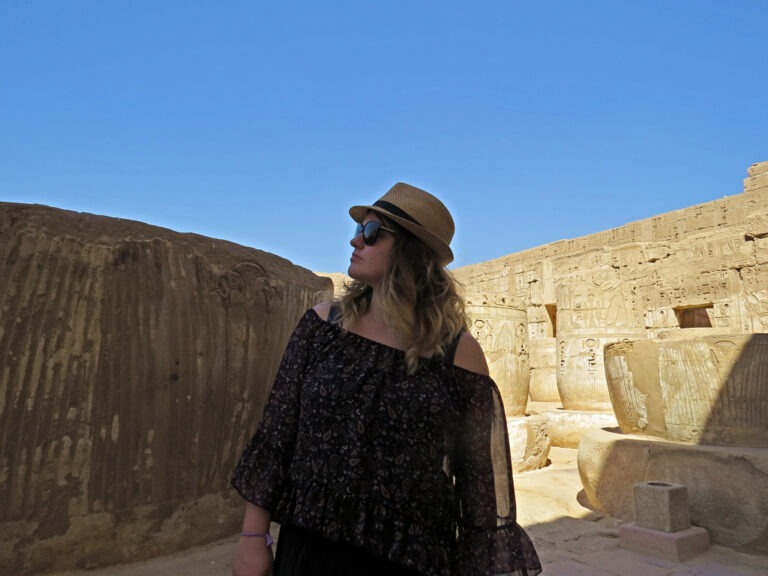
Ramesses III was the last pharaoh to have any real influence or control over the ancient kingdom. His reign saw the decline of Ancient Egypt. His reign was also characterised by a constant state of a war and a faltering economy. Consequently, he was murdered. I guess that’s what happens when you push your people to their limits.
Nonetheless, the temple is a tribute to what humans can create even under stressful conditions. The temple is artistically beautiful as well as historically important.
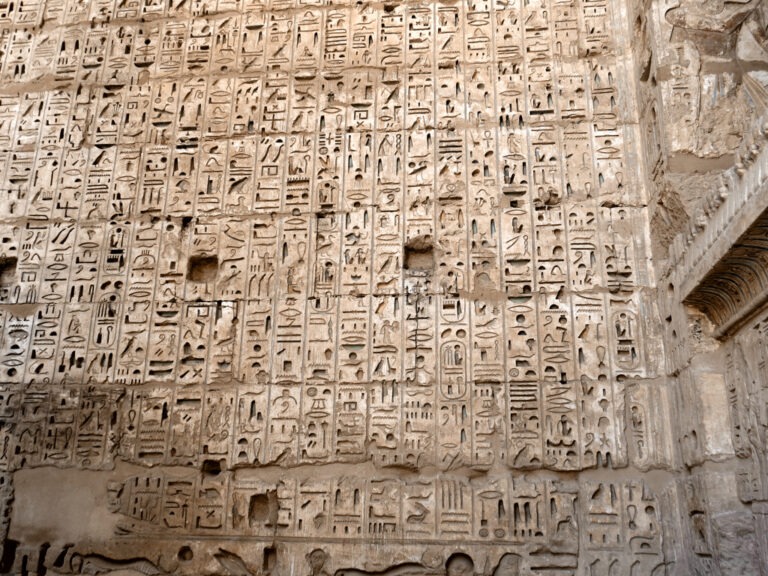
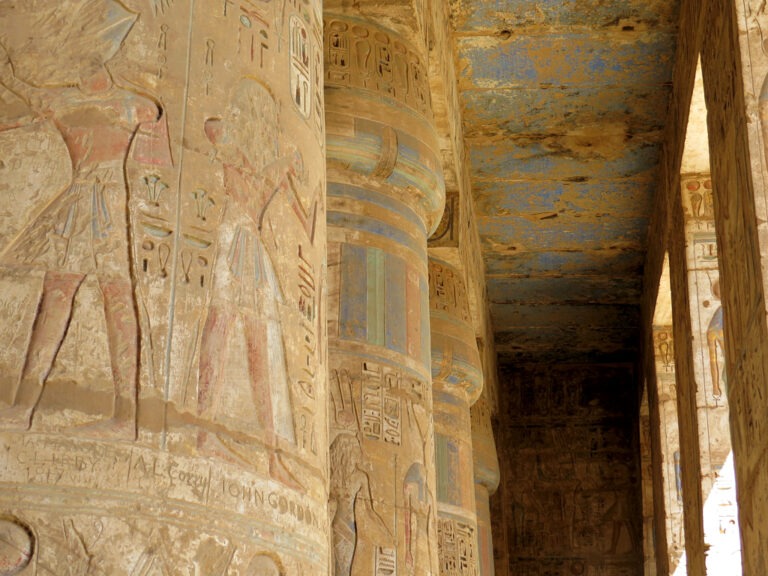
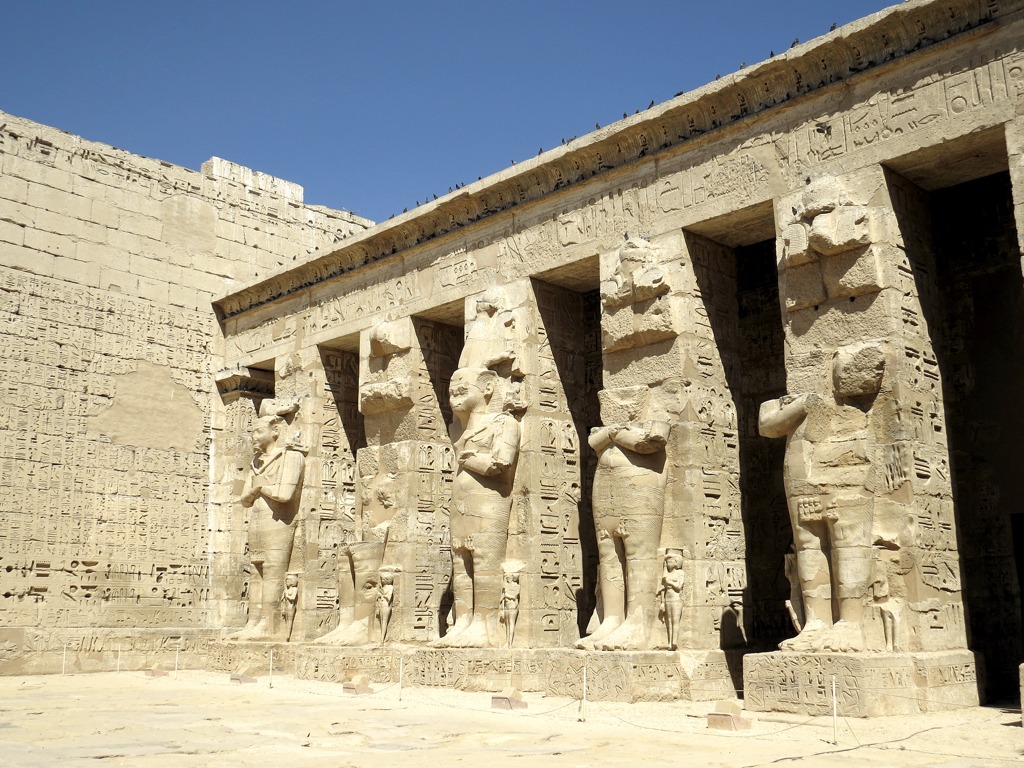
Colossi of Memnon
Our last quick stop was checking out these large stone statues of the Pharaoh Amenhotep III. The statues themselves are largely uninteresting, however the legend around them in Ancient Greece and Rome is intriguing.
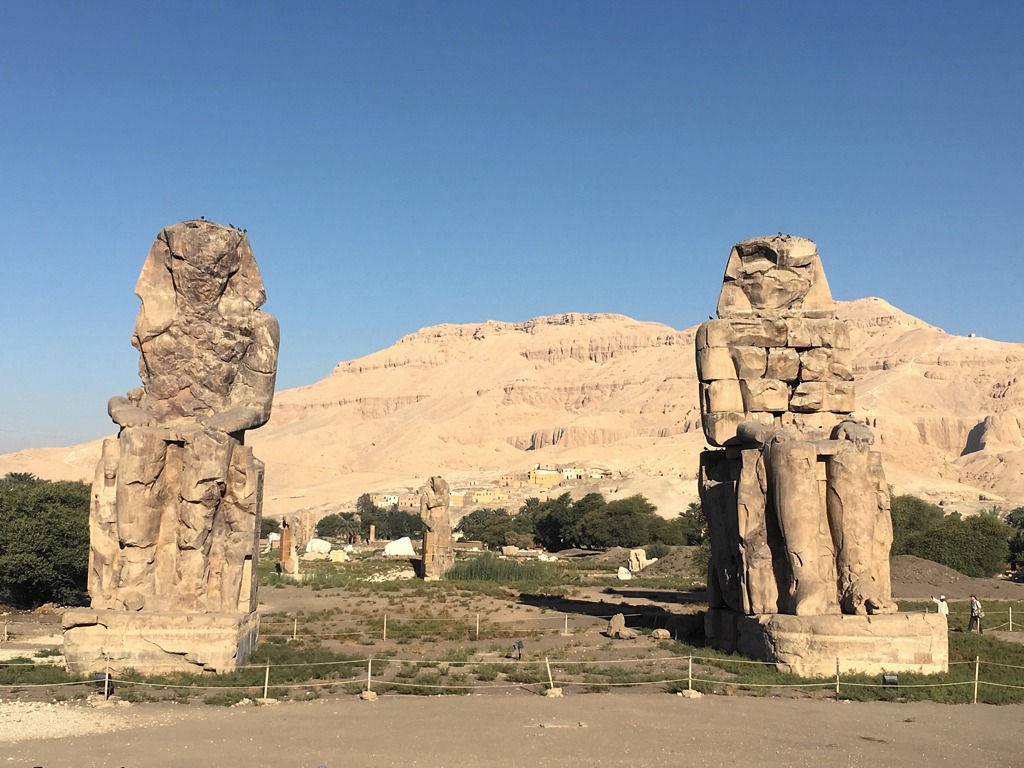 Supposedly, in 27 BCE, a large earthquake shattered one of the statues. The remaining lower half of this statue started to produce a strange musical sound, usually at dawn. Early Greek and Roman tourists who came to hear the sound gave the statue the name of ‘Memnon’. For those of you who may not know your ancient epic history, Memnon was a hero of the Trojan War, a King of Ethiopia, who led his armies to Troy’s defence but was ultimately slain by Achilles. Memnon was said to be the son of Eos, the goddess of dawn, and after his death, his mother is said to have shed tears—or dew drops— every morning. The “singing” of the statues was attributed to his mother mourning for her son. Because the legend grew and grew, many visitors did not even know the statues depicted an ancient dead pharaoh. They thought the statues were of Memnon. Funny, huh?
Supposedly, in 27 BCE, a large earthquake shattered one of the statues. The remaining lower half of this statue started to produce a strange musical sound, usually at dawn. Early Greek and Roman tourists who came to hear the sound gave the statue the name of ‘Memnon’. For those of you who may not know your ancient epic history, Memnon was a hero of the Trojan War, a King of Ethiopia, who led his armies to Troy’s defence but was ultimately slain by Achilles. Memnon was said to be the son of Eos, the goddess of dawn, and after his death, his mother is said to have shed tears—or dew drops— every morning. The “singing” of the statues was attributed to his mother mourning for her son. Because the legend grew and grew, many visitors did not even know the statues depicted an ancient dead pharaoh. They thought the statues were of Memnon. Funny, huh?
Evening
In the late afternoon, just before heading back to the cruise ship, we made a stop at one of the many Alabaster shops. There is clearly an established relationship between tour companies and these types of shops. Having already been intimidated by all the street sellers, I felt a twang of panic as I was trapped inside a shop full of such characters.
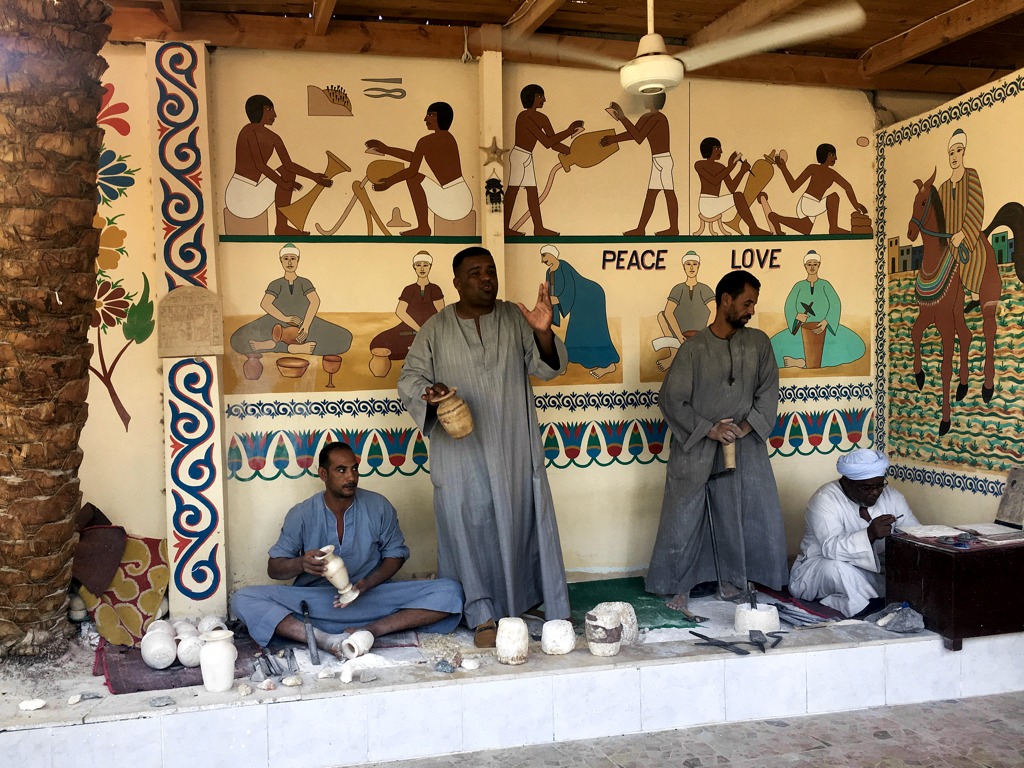
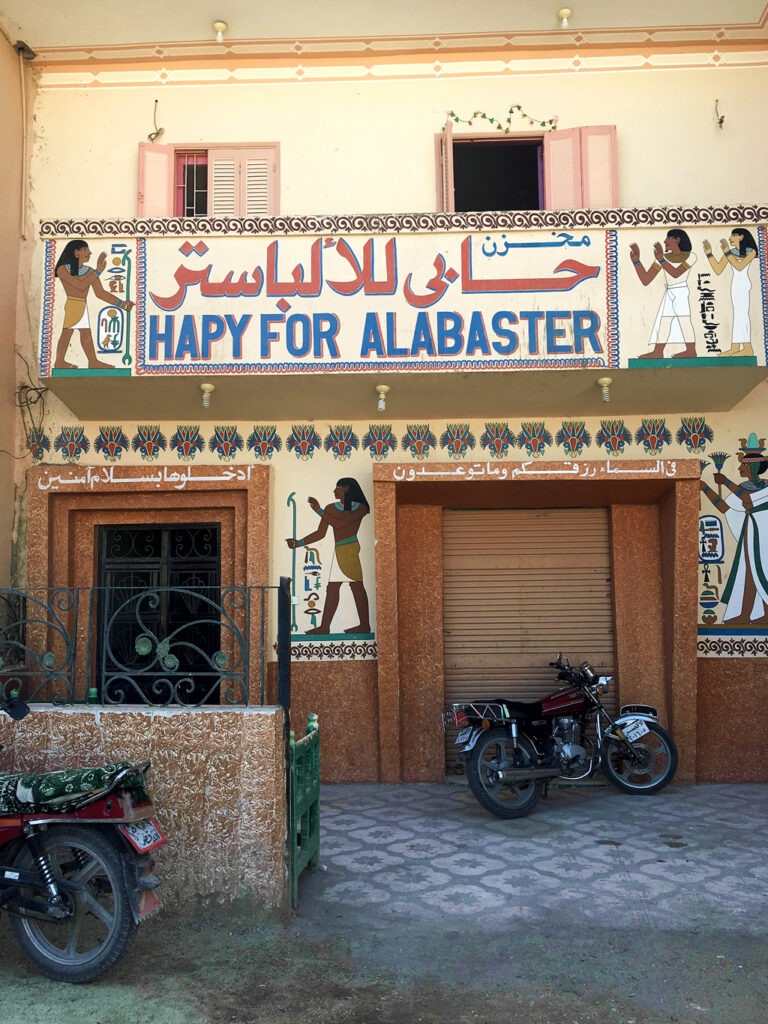 Nonetheless, Victor’s parents were able to negotiate some great prices on some very special pieces. They bought a figurine for us, which is safely stored away but I can’t wait to showcase it in my future home someday. My favourite part of the shop is the sign above the door which says, ‘Good Pay, Good Price, Good Bye’. And with that, we were off.
Nonetheless, Victor’s parents were able to negotiate some great prices on some very special pieces. They bought a figurine for us, which is safely stored away but I can’t wait to showcase it in my future home someday. My favourite part of the shop is the sign above the door which says, ‘Good Pay, Good Price, Good Bye’. And with that, we were off.
We returned back to the ship exhausted and overwhelmed, but the night was not over just yet. The cruise workers had figured out it was Victor’s mom’s birthday, so a dancing celebration quickly ensued! It was a great way to end the night.
Next up: more temples and what it’s like being the only sick cruise passenger! Click here to read on to Part III.


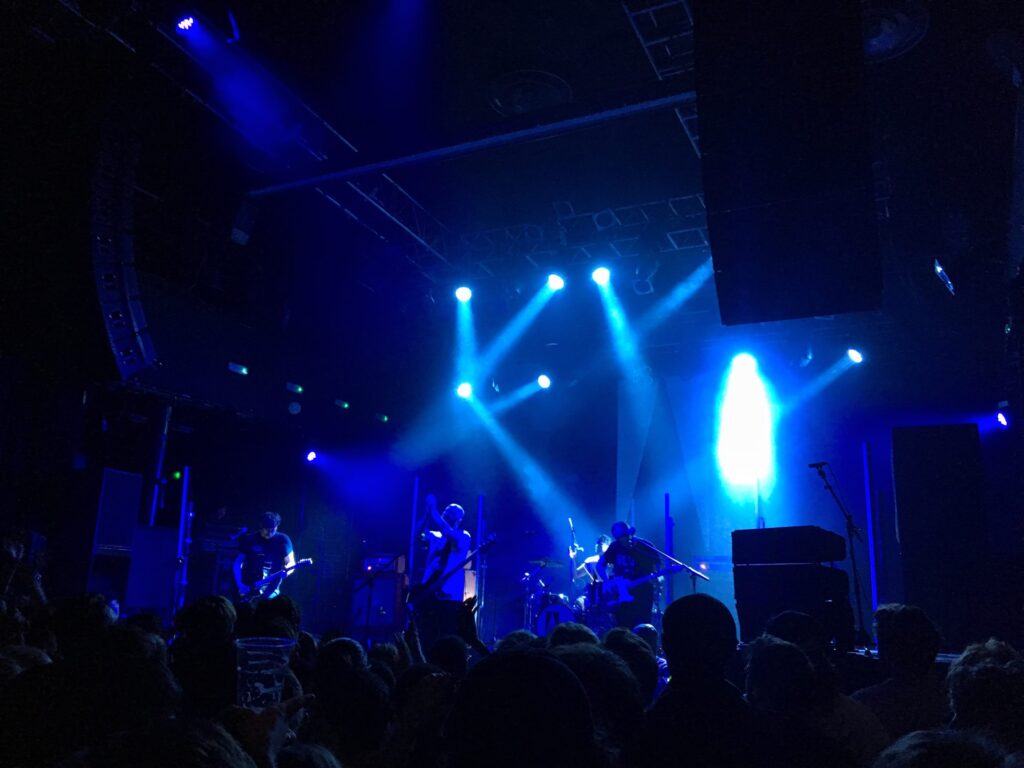

No Comments